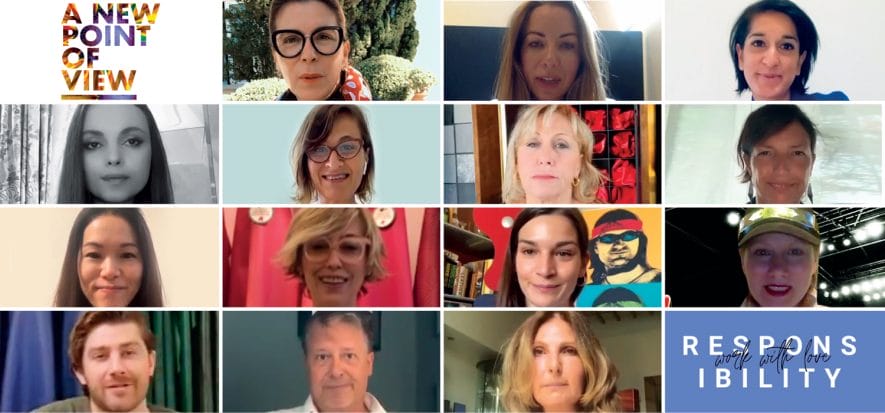Fulvia Bacchi, CEO of Lineapelle, said: “Covid-19 has not changed the situation, but has accelerated the need for answers and changes”. Sustainability had already become the priority of the public opinion and, in a world struggling with the pandemic “positions of circumstances” are no longer enough, continues Bacchi, as well as “the general acceptance of those who made the use of recycled materials the emblem of sustainability”. More is needed. Tanners and designers explain, then, what is already the sense of responsibility of the leather supply chain, and what are the work notes for the future. They do it from Lineapelle’s Instagram account, in a cycle of video-selfies, connected with the new trade fair A New Point of View and to Lineapelle Virtual Networking.
Tanners and designers
“Responsibility means respecting our planet and our people – says Viola Dalle Mese, from Conceria Montebello -. We would like to be remembered as the generation that surpassed the Anthropocene. To achieve this, we have to set two objectives fro ourselves: innovation and inclusion”. “We live in a new era, one in which people feel responsible for the life of the next generations”, adds Azzurra Giannoni, from Conceria Tuscania. The commitment translates into both daily life and entrepreneurial activity: “The whole supply chain – she continues – must demonstrate the same responsibility in every phase of production”.
Sustainable drums
And if Narayan Hamel, from Dutch company Rompa Leather, remembers how his company applies its commitment to green innovation with investments in the process and machinery, Chiara Mastrotto can boast a sixty-year path for Gruppo Mastrotto, also made of investment and commitment on the territory. “Responsibility for us goes in two important directions – she says -: environmental and social. From the environmental point of view, we work a wonderful product, which is leather, natural and plastic free”. Tanning is called to face an epochal challenge, we said.
According to Charlotte Tusting, from the British Tusting and Burnett, “Design should not be for the benefit of the few and to the detriment of the majority. For this to be possible, it is necessary for the entire supply chain to work together, to create products that are carefully made at each processing step”. The goal is, one day, to be able to “look back and be proud of the choices they made”.
Designers and commentators
“Responsibility and being responsible are similar concepts, but they are not the same thing – notes MariaTheresa Laudades, journalist and researcher -. In Italy, responsibility is an element that is part of its identity. Italians were the first to worry and really take care of their communities. It is not a nowadays-phenomenon, but it belongs to the history of fashion”. In the fashion system, therefore, there is a trend that goes from Belpaese to the world. “Venice is my city, the place where I do the esearch that allows me to bring an ethical and respectful product into the world – recognises Elisabetta Armellin, of the brand V73 -, in the hope that my bags can help create a better future”.
On the other hand, designers who want to be sustainable has many ways to put their intention into practice. These are the advantages that digital brings with it: a certain productive knowledge that avoids the formation of over-stocks and future waste, and the concept of the product itself. “When we design, we do it in a modular way, so that it can then be disassembled – is the example by Anina Net from 360 Fashion Network -. In this way, the materials and components can be separated to be recycled”.
Public, private
“Responsibility lies in everyday life, from the company’s leadership and in the roles of life – says designer Bav Tailor -. For me, it means working on my personal ecology. There is no need to be perfect, there is the need to start”. “Many of us say they want a better world for their children – concludes Anna La Germaine -: it is our responsibility to create it through our actions. Before launching a new business, one must ask oneself: how it will influence others? If we act well, we can start a chain reaction”.
Read also:











